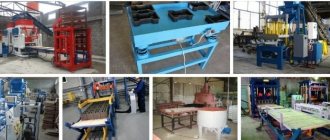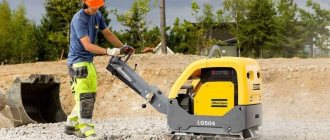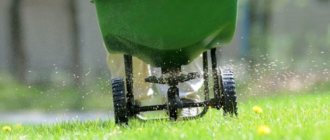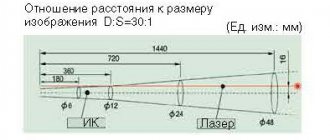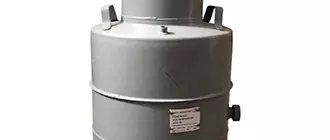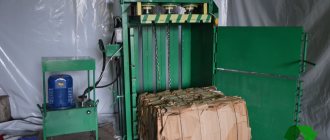Paving slabs have become an integral part of the exteriors of courtyards and adjacent areas of private houses, driveways and garden paths of country cottages and dachas, parking lots of companies and industrial enterprises. It would take a long time to list all the possible uses of this type of decorative coating. There are a large number of types and classes of tiles, differing in size and characteristics. One of the methods of its production is casting from special molds.
A machine for the production of paving slabs is used to cast paving stones. There are several types of machines, differing from each other in the level of mechanization of the process and the volume of production of finished products. The simplest of them are vibrating tables. You can make such a machine for making paving slabs with your own hands at home.
How are paving slabs made?
The technology for making paving slabs is quite simple: a sand-cement mixture is poured into molds and hardens. But tiles made in this way will turn out loose and very fragile.
To obtain the desired product, a vibropress is used, in which concrete is poured into a vibrating matrix, and a press presses on top of the cement mortar. The industry produces similar machines.
They are designed for the production of tiles on an industrial scale. Factory vibrating presses are very expensive; if you are not going to use the machine for commercial purposes, then purchasing it does not make sense.
You can make this mechanism yourself.
Equipment for home production
To make high-quality paving slabs yourself, you need to prepare the appropriate equipment. Otherwise, you will not achieve the ideal state of concrete after pouring into the matrices.
The following devices are used in the production of standard products:
- vibrating table;
- pressing machine;
- polyurethane molds for filling.
The vibration table can be upgraded and equipped with a pressure plate.
High-quality facing material is produced using a vibrating table
A person without design experience is unlikely to produce such equipment without errors, but it’s still worth a try.
Components for brick making press
To create a brick making machine, you need to imagine how it works (you can see the operation of a factory machine), the principle is the same.
Main components of the machine:
- Plate;
- Tabletop;
- Press;
- Vibromechanism.
Before starting production, it is important to make drawings of the parts. You can find several options for the machine on the Internet. You should choose based on the availability of components.
There are options for simpler brick presses, and there are more complex and powerful ones. To calculate the size of the machine, you need to decide on the size of the tile and the number of matrices. There is no point in creating a device for one form.
How to make forms
If you want to make shaped street tiles, you will need molds for pouring the mortar. You can make them yourself. You will need polyurethane with a hardener and a sample tile or a homemade element. It is made of gypsum - the best option for creating figures of any complexity and configuration. The volumetric element is filled with liquid polyurethane. Since it is mixed with a hardener, after a while a soft but solid product will be obtained, which can be removed from the workpiece after complete drying.
Polyurethane imprints every bend, indentation or protrusion of the matrix, so select only reference samples as a template.
To ensure sufficient production volumes, you will need at least 10 molds.
It is better to buy ready-made polyurethane matrices for the solution
Making a table
The machine table is a metal frame with welded legs. Dimensions are selected in accordance with the expected power of the structure.
Approximate dimensions:
- 50 by 70 centimeters or 70 by 100 centimeters.
- The height of the legs of the mechanism must correspond to the height of the person who will work on it.
- To make the legs, you can use a steel angle 10 centimeters wide, a ten-centimeter pipe or a tenth channel.
- The load on the legs will be large, so they need to be reinforced with gussets (steel rectangles welded to the leg and frame).
If the machine does not change its location, it is recommended to fill the legs with concrete.
How to make a vibration pressing machine
The simplest option is to make a vibrating table. To construct such equipment, you will need:
- welding machine;
- Bulgarian;
- drill;
- mounting bolts.
The drawings are carefully worked out in advance to calculate the optimal position of the engine under the tabletop. Then a frame of 50x50 mm corners is welded and fixed on legs with plates at the lower end. They are useful to fix the installation in one place. Next, strong metal springs are fixed in the corners and in the middle. A flat tabletop with sides is installed on them. A motor, for example from a washing machine, is screwed onto the bottom.
Scheme of a homemade vibrating table
To set up the press, an additional panel in the form of a flat cover is fixed to the vibrating table, and a lot of pressure is applied to it. Separate elements are used, which are slightly smaller in size than the molds and fit into them to press the solution.
If you rely on a production sample of the machine, you will need sheet metal and a profile. The frame is welded from the latter. The container with the solution should have the shape of a trapezoid, tapering downwards. The bottom is hinged and ensures the supply of the mixture into the matrices, which are formwork made of metal and wooden planks. A sliding press is made on top from plates that fit into the shape of the clamping mechanism. Vibration is added to ensure air release. This option is applicable in the production of ordinary rectangular tiles.
It’s not easy to assemble a complete installation yourself, but it’s possible
Frame making
Prepared blanks for the frame are welded using electric welding. Weld seams are cleaned using an angle grinder, then the entire workpiece is painted. It is advisable to paint in order to prevent rust: the cement-sand mixture is diluted with water.
The frame must have no in-plane displacements.
Technology difference
To pave the yard, you do not need to spend cash on purchasing ready-made material. You can use homemade paving slabs, and a vibropressing machine will make it possible to make such a product. The main thing is to choose the right production methods for paving stones
.
| Vibropressed paving stones | Vibrocasting | |
| Geometric accuracy of the shape | 100% keep line clean | Does not guarantee the same shape |
| Frost resistance | Withstands changes and strong drops in temperature | Weak resistance to frost |
| Productivity | High, large yield of tiles in one day | Low, automation is not possible |
| Wear resistance | High, shelf life 16 years or more | Average, shelf life up to ten years |
| Surface imperfections | No | The overly smooth outer surface of the tile is dangerous for movement in winter |
The manufacturer is trying to make paving stones using vibrocompression.
- Servicing the equipment does not require a high level of special training.
- Since the production of vibro-pressed paving stones
is easier than vibro-cast paving stones, the work is carried out by one person, less often - by two. - Technical database process - compaction of fine-grained composition in special forms by vibration.
- During mixing, shrinkage, additives and low molecular weight organic substances are added to the concrete composition.
This manufacturing process does not require investment and is used by developers during private construction. Paving slabs
doing it with your own hands is more accessible.
Making a countertop
This element of the press must be made with great strength because it will experience heavy loads.
- The dimensions of the table must match the tabletop.
- The frame is made from channel No. 10 or a corner 7cm by 7cm.
- The blanks are cut, trimmed and welded.
- When welding parts, it is necessary to ensure their evenness - during the welding process, metal structures can bend.
Then a rectangle is cut out of a 10 mm thick steel sheet, then placed on the prepared frame and welded. The top of the tabletop is a sheet.
What can you save on?
If paving slabs are used to cover garden paths or alleys, they can be made thinner. Plus, you don’t have to use a mesh reinforcing frame in the design.
The strength of garden path tiles can also be reduced. This is achieved by reducing the amount of cement used. For example, by increasing the portions of crushed stone or sand. That is, the solution recipe will be: 1:2:4 or 1:3:3. You can avoid crushed stone altogether by using coarse sand as a filler. Although this is not the best option.
Attaching the table top to the table
One way to secure a tabletop is to install it on springs. It is enough to install six springs about 12 cm long and 6 cm in diameter, which have great rigidity.
For springs, cups are cut out of the pipe. The diameters of the pipe and spring must match. The spring should sit tightly in the glass by one third of its length. The glasses are welded to the table and to the countertop, precisely marking their location points.
The principle of operation of a vibrating table for tiles
The easiest way is to cast tiles into ready-made molds. However, the resulting material is loose and inferior in strength even to ordinary concrete. In addition, due to its compact size, it is difficult to achieve uniform shrinkage of the mixture.
As a result, strong bonds are not formed between the constituent components, and air voids remain in the body of the tile. In addition to the banal loss of strength, water penetrates into cracks and cavities. At sub-zero temperatures, the resulting ice will break the stacked blocks.
To obtain denser and higher-quality artificial stone, equipment for the production of paving slabs is equipped with a vibrator. Industrial designs work precisely on this principle.
A tile vibration press produces durable stone with a smooth front surface that does not allow moisture to pass through.
Electric motor for brick making machine
For the operation of a homemade concrete block press, an electric motor is required. The engine should be selected more powerful. It is recommended to use VI99/E. You can use any electric motor by connecting it with a belt to an eccentric.
Depending on the type, the engine is mounted below on a table top or on a work table. The electric motor is secured with bolts. To prevent the nuts from loosening due to vibration, engraving washers are used.
Selection and installation of an electric motor or vibrator
The vibration motor, taking into account the simultaneous impact of press pressure on the tabletop, must have sufficient power. Making a homemade concrete block press is a labor-intensive process, and its failure due to the installation of a obviously unsuitable low-power motor is an unjustified excess. Therefore, when assembling a homemade mini-brick press, it is advisable to use commercially available reliable industrial vibrator motors with the ability to regulate the frequency and amplitude of vibrations, for example, VI-99/E.
Taking into account that the pressure on the mold will be exerted in the vertical plane, high-quality compaction will be ensured by vibration in the horizontal plane. To do this, the vibration motor must be installed vertically on the tabletop, from below, approximately at the intersection of its diagonals (center of gravity). To do this, a steel bracket with holes for mounting the electric motor is welded to the tabletop from below.
The engine is mounted on bolts using split washers (Grover washers), which prevent the nuts from loosening during vibration.
Vibrating table with electric motor
Press manufacturing
The quality of paving slabs depends not only on vibration, but also on the amount of compression. You won’t be able to construct a hydraulic press with your own hands (you can use a jack).
It is easier to use human physical strength to compress the solution. The part (punch) is not difficult to make.
It is enough to weld the bracket with the axle to the table (short side). A lever is made from the profile, with a bushing at one end and a handle at the other. The lever should not be too long. It is attached to the punch. On the handle there is a remote control for turning on/off the electric motor.
What is a professional machine?
The standard device looks like a complex installation. Despite its modest dimensions, it is used to organize not only the production of street tiles, but also to establish mass production, that is, to open their own business. In the second case, it is more advisable to buy a ready-made device. This machine has five main parts:
- matrix;
- platform;
- container for solution;
- vibration installation;
- press.
The operating principle is organized as follows:
- The mixture is placed in the tank. It moves to the forms and concrete is fed through the bottom into the matrices.
- After this, plates are placed on top and the mass is pressed to the platform.
- For better compaction and removal of voids, vibration is applied. The vibrations combined with high pressure instantly compact the solution.
- Afterwards, the forms are raised, and the finished elements remain on the platform.
- Next, they are taken away along with the stand and dried.
A professional machine designed for the production of durable outdoor tiles in large quantities
A similar design can be made with your own hands, however, its power will be significantly less compared to professional equipment.
How does a brick press work?
Before you start working on a homemade concrete block press, you need to properly prepare the cement-sand mixture.
The mixture consists of:
- Cement grade M 500;
- Crushed stone (fraction 5-10);
- Sand (fraction 2.5);
- Additives and dyes;
- Water.
To make high quality tiles, the mixture must be stiff. The tiles should have reduced moisture absorption and increased frost resistance.
You can check the prepared mixture using a truncated cone by lowering it into the solution. The mixture is considered to be of high quality if the steel cone enters the mixture 50 mm.
- Before filling with cement-sand mixture, the matrices must be lubricated with oil.
- This is done so that the cement does not adhere to the walls of the matrix.
- Then the cement mixture is distributed into molds.
- The matrix must coincide with the punch. By pressing the lever, the electric motor is briefly turned on.
- After this, the workpiece is removed from the matrix and laid out to dry.
With a strong desire, a minimum set of tools and materials, making a brick making machine yourself is a completely doable task.
Features of use and advantages of vibrocompression technology
The technological process of vibratory pressing is essentially incredibly simple - a mixture of the components that make up the base of the tile needs to be poured inside a rigid matrix, which is located on a vibrating frame. In addition to vibration, the mixture is additionally pressed by a vibrating punch, which accurately follows the contours of the matrix. Its action continues until the mixture is guaranteed to be compacted.
After this, the punch and matrix are separated, and the entire finished product is removed from the pallet. The main advantage of this technique is the ability to quickly perform significant amounts of work and ease of production with little labor input. To organize the technological process, all you need is a brick making press - no more complex devices are required.
Photo of a brick making press for paving slabs
Grouting gaps
To complete this process you will need sand and a brush. Make sure that the sand is not wet, so it will fall perfectly between the seams. Carefully sweep away the remaining sand with a brush, and then moisten the entire area with water. In places where there is not enough sand, the procedure should be repeated again. Well-laid and backfilled fragments will not wobble underfoot.
Grouting joints
The gaps between the curb and the tiles can be sealed with cement mortar in a ratio of 1:4. By following the installation instructions correctly, the coating will last for a long time.
How to calculate and lay tiles can be seen in this video:
Main characteristics
If a master is faced with the task of manufacturing a vibrating press for paving slabs, before work he must determine what characteristics the finished equipment should have.
Performance:
- it is necessary to determine how many products the machine should produce within an hour;
- tiles are flat products, so productivity can be calculated in square meters or compared by the number of pallets filled per unit of time;
- this characteristic depends on the level of automation of the unit, that is, the speed of changing pallets, removing finished products from the working area, and timely supply of solution to the matrix;
- When manufacturing for paving your own site, it is enough to assemble a manually controlled installation (a manual brick-making press for paving slabs) with a maximum loading weight of no more than 35 kg. One person can handle such a device.
Better performance can be achieved using various auxiliary mechanisms, however, this is relevant if the master wants to organize a larger production volume
Formation cycle:
- at home you can make a brick press for production with a formation cycle duration of about one minute;
- if you buy a brick press with high-tech characteristics, the indicator is 9-15 seconds.
Forming zone parameters:
- The area of a homemade vibrating table for paving slabs determines the dimensions of the pallet that is used when working with a specific press. This allows you to understand how many tiles of a given configuration can be produced per cycle;
- the larger the molding area, the more productive and versatile the unit will be - all this is reflected in the dimensions, power, and weight of the equipment;
- equipment for paving slabs is manufactured with a molding area of no more than 0.3 m².
Mold height:
- this parameter shows the height of the product that will be formed by the brick making machine, which depends on the dimensions of the working platform;
- The master needs to know not only the maximum parameters; the minimum height of the mold is also structurally limited. As a rule, 60-80 mm is sufficient.
Vibration frequency:
- when producing material without crushed stone, it is recommended to adjust the frequency to 100 Hz, which allows the smallest particles to be brought into resonance, improving the distribution of the working mixture;
- in other cases, a frequency of 50-75 Hz is sufficient, which is optimal for making paving stones with your own hands.
Compression force:
- the higher the pressure exerted by the machine, the stronger the finished product;
- the compression force of manual and hydraulic units differs hundreds of times;
- In order for the product to achieve the required strength, a mixture with a high content of cement and additives is loaded into weak units, which determines the final cost of the tile.
The optimal compaction coefficient is taken as 0.97-0.98, based on the consumption of Portland cement per 450-47 kg/m³ of solution
Vibrator power and parameters:
- for home production, it is enough to equip a homemade concrete block press with one vibrator with a power of 0.5 kW;
- you can increase power by using several vibration sources;
- a relatively small vibration amplitude is acceptable for a more mobile mixture, and a high amplitude for a rigid one;
- to regulate vibration parameters, an AC potentiometer should be installed;
- Please note that there are specific network requirements. There are single-phase devices operating from a 220 V network, some should be connected to a three-phase - 380 V;
- the vibrator must be correctly unbalanced and secured according to the diagram;
- incorrect placement of the device will affect the quality of the material.
